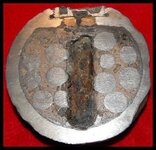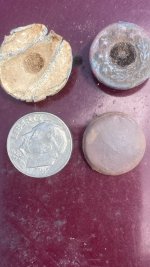KGC4Dixie
Jr. Member
- Sep 13, 2009
- 94
- 3
Canister and Case Shot--What's The Difference?
Q: Artillery used different rounds against attacking troops. One was the Canister and the other was Case shot.... What is the difference?
A: The Canister was a shell made with about 96 iron balls held together by a tin cover, the Case shot was a shell with a timed fuse that would burst over the attacking troops' heads. Sending pieces of it in to them.
http://www.bitsofblueandgray.com/trivia.htm
Q: Artillery used different rounds against attacking troops. One was the Canister and the other was Case shot.... What is the difference?
A: The Canister was a shell made with about 96 iron balls held together by a tin cover, the Case shot was a shell with a timed fuse that would burst over the attacking troops' heads. Sending pieces of it in to them.
http://www.bitsofblueandgray.com/trivia.htm
Upvote
0





